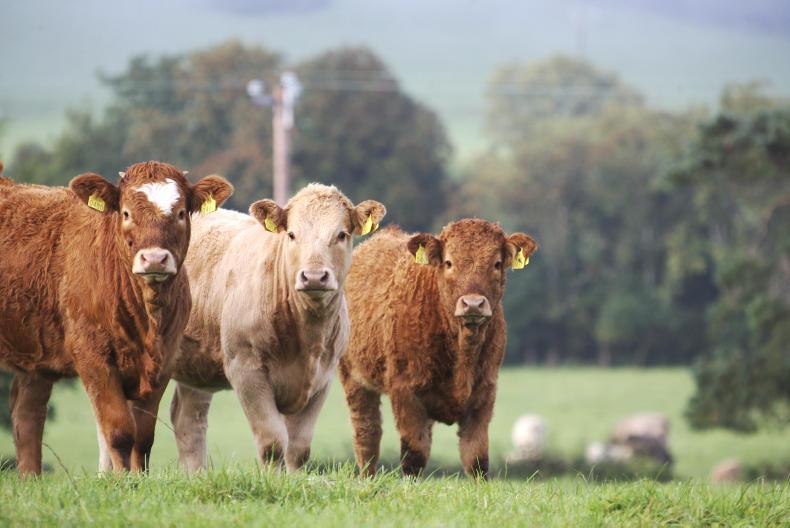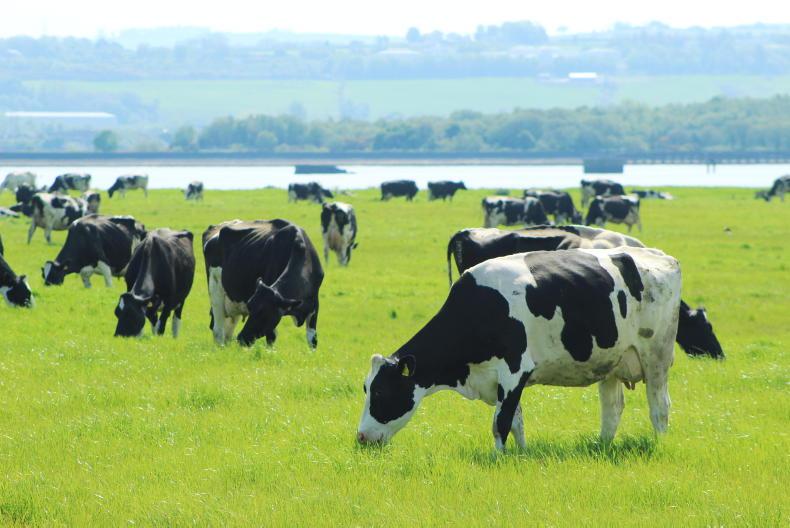Farmers who receive the lowest direct payments under the Common Agricultural Policy (CAP) are the most reliant on them for their farm incomes.
On drystock farms, farm income from the market before direct payments are included, is less than zero, the 2018 Teagasc National Farm Survey revealed on Thursday.
“On average, these farms do not make a profit from production and are heavily dependent on support,” the survey reads.
Although average direct payments are lowest on suckler farms at €13,109, the reliance on them and their overall contribution to farm income was 158% in 2018, the highest on record.
This indicates that the average suckler farm with a family farm income of €8,318, lost over €4,500 of direct payments over the course of the year.
A similar picture is true on other drystock farms, with the average payment on sheep farms in 2018 €18,812, 137% of total income.
Cattle finishers or those who keep store cattle fared slightly better, reporting an average direct payment of €16,257 at 113% of farm income.
High payments, less reliance
Due to their size, dairy and tillage farms receive the highest direct payments overall. However, in stark contrast to the drystock sector, they are the least reliant on them.
Last year, the average direct payment received on dairy farms stood at €21,131, which represented one-third of total family farm income.
Direct payments on tillage farms comprised over half of family farm income in 2018, at €23,134 on average. The survey authors said it should be noted that in addition to crop area, many tillage farms would also have a large on-farm cattle enterprise.
Schemes
The National Farm Survey looked at individual schemes under the CAP.
Last year, payments under the GLAS scheme increased by 12% year-on-year, reflecting both a rise in participants and a higher advance payment rate.
Suckler farmers saw the largest average increase from GLAS, up 30% to €1,949 on the average farm, while sheep farms received the highest GLAS payment on average, at €2,227.
Cattle finishers and tillage farms received average GLAS payments of approximately €1,500, with the average dairy farm receiving €555 in 2018.
One-third of all farms participated in GLAS in 2018, with 50% of sheep farmers taking part in the survey.
Additional monies were also allocated under the ANC scheme in 2018, which Teagasc says benefited all farm systems with the average payment received €1,873.
Like GLAS, sheep farms tended to receive most through this scheme at €2,491 on average with dairy and other drystock farms receiving approximately €1,800.
Basic payment per farm type
The basic payment accounted for 78% of all payments received on the average dairy farm in 2018. The equivalent figure on tillage farms was 84% with the proportion on suckler farms 57% and finishing 62%.
It accounted for 62% of payments on the average sheep farm in 2018.
Read more
Family farm incomes plunge by over 20%
Cheque in the post remains central to sheep sector viability
Suckler farms downsize as key costs climb
Hogan: pay farmers to cut suckler cow numbers
Farmers who receive the lowest direct payments under the Common Agricultural Policy (CAP) are the most reliant on them for their farm incomes.
On drystock farms, farm income from the market before direct payments are included, is less than zero, the 2018 Teagasc National Farm Survey revealed on Thursday.
“On average, these farms do not make a profit from production and are heavily dependent on support,” the survey reads.
Although average direct payments are lowest on suckler farms at €13,109, the reliance on them and their overall contribution to farm income was 158% in 2018, the highest on record.
This indicates that the average suckler farm with a family farm income of €8,318, lost over €4,500 of direct payments over the course of the year.
A similar picture is true on other drystock farms, with the average payment on sheep farms in 2018 €18,812, 137% of total income.
Cattle finishers or those who keep store cattle fared slightly better, reporting an average direct payment of €16,257 at 113% of farm income.
High payments, less reliance
Due to their size, dairy and tillage farms receive the highest direct payments overall. However, in stark contrast to the drystock sector, they are the least reliant on them.
Last year, the average direct payment received on dairy farms stood at €21,131, which represented one-third of total family farm income.
Direct payments on tillage farms comprised over half of family farm income in 2018, at €23,134 on average. The survey authors said it should be noted that in addition to crop area, many tillage farms would also have a large on-farm cattle enterprise.
Schemes
The National Farm Survey looked at individual schemes under the CAP.
Last year, payments under the GLAS scheme increased by 12% year-on-year, reflecting both a rise in participants and a higher advance payment rate.
Suckler farmers saw the largest average increase from GLAS, up 30% to €1,949 on the average farm, while sheep farms received the highest GLAS payment on average, at €2,227.
Cattle finishers and tillage farms received average GLAS payments of approximately €1,500, with the average dairy farm receiving €555 in 2018.
One-third of all farms participated in GLAS in 2018, with 50% of sheep farmers taking part in the survey.
Additional monies were also allocated under the ANC scheme in 2018, which Teagasc says benefited all farm systems with the average payment received €1,873.
Like GLAS, sheep farms tended to receive most through this scheme at €2,491 on average with dairy and other drystock farms receiving approximately €1,800.
Basic payment per farm type
The basic payment accounted for 78% of all payments received on the average dairy farm in 2018. The equivalent figure on tillage farms was 84% with the proportion on suckler farms 57% and finishing 62%.
It accounted for 62% of payments on the average sheep farm in 2018.
Read more
Family farm incomes plunge by over 20%
Cheque in the post remains central to sheep sector viability
Suckler farms downsize as key costs climb
Hogan: pay farmers to cut suckler cow numbers









SHARING OPTIONS